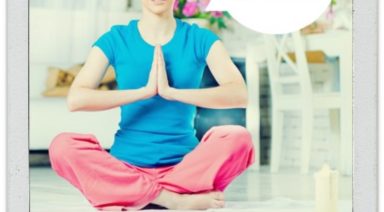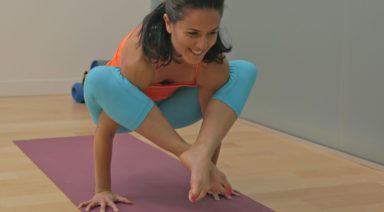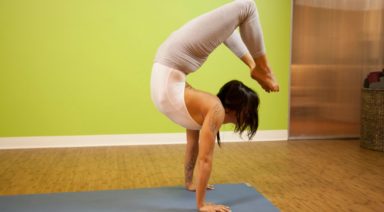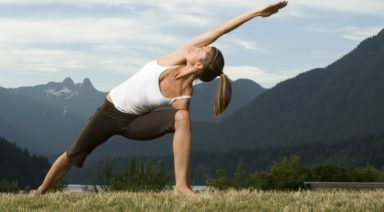Janu Sirsasana: Head to Knee Pose

ADJUSTMENTS | BENEFITS | PREP POSES | SANSKRIT | STEPS
Janu sirsasana (JAH-new shear-SHAHS-anna), may look simple, but it combines elements of a forward fold, twist, and side body stretch. Head to knee pose stretches the hamstrings, low back, and groins and can be adjusted to be very challenging or very relaxing.
Philosophy + Origin
While the name of the pose may seem to reveal an intention based on physical anatomy (head to knee pose), janu sirsasana is really all about turning inward and creating space for self-reflection. Instead of focusing on the intensity of the posture — or a desire to bring your head to your knee — turn your attention to the peace and stillness that may be hiding beneath the more prominent sensations.
ADJUSTMENTS/MODIFICATIONS:
- Use a folded blanket under your hips to help keep a forward tilt of your pelvis.
- Place a folded blanket under your extended knee to offer support, especially if the knee doesn’t readily touch the ground.
- Loop a strap around the foot of your extended leg to deepen the stretch in the hamstrings while keeping the spine long.
- To deepen the stretch and increase the intensity of this pose, widen the space between your knees.
STEP-BY-STEP:
- Begin in a seat with your legs stretched out in front of you. If your low back rounds, sit up on some blankets or a pillow.
- Bend your right knee and place the sole of your foot near your left inner thigh, top of your foot on the ground. Option to place a blanket under your right thigh or ankle to support.
- Turn your torso toward your left leg. Inhale to lengthen your torso, exhale to walk your hands forward and reach your chest to your left toes.
- Ground down through your left thigh and reach through your left heel. Keep the front of your torso long and your sternum lifted. If there’s room, option to lower your forehead to your extended leg.
- Lengthen your tailbone behind you to encourage your natural lumbar curve.
- After up to three minutes in janu sirsasana, lift yourself up and out of the posture on an inhalation. Return to seated then repeat on the other side.
PREPARATORY POSES:
- Bound angle pose | Baddha konasana
- Reclined hand to toe pose | Supta padangusthasana
- Standing forward bend | Uttanasana
SEQUENTIAL POSES:
- Seated forward fold | Paschimottanasana
- Wide angle forward bend | Upavistha konasana
- Tree pose | Vrksasana
COUNTER POSES:
- Knees to chest pose | Apanasana
- Supported fish pose
- Savasana
SANSKRIT:
- Janu = knee
- Sirsa = head
- Asana = pose
PHYSICAL BENEFITS:
- Stretches the quadratus lumborum (QL), hamstrings, and groins.
- Thought to provide relief for headaches, menstrual discomfort, digestive issues, and stress.
Legal Disclaimer Before participating in any exercise program or using any fitness products or services that may be described and/or made accessible in or through the Gaia Website and/or the Services, you should consult with a physician or other healthcare provider. Read more about Gaia’s Terms Of Use.
Parivrtta Utkatasana: Revolved Chair Pose

ADJUSTMENTS | BENEFITS | SEQUENCING | SANSKRIT | STEPS
Parivrtta utkatasana (par-ee-vrit-tah OOT-kah-TAHS-anna) lives up to the Sanskrit translation of power and ferocity. A great way to strengthen and lengthen the leg muscles, this challenging posture also lengthens and improves mobility in the spine. Practicing parivrtta utkatasana will give a feeling of groundedness in the lower half of the body and open spaciousness in the upper body.
Philosophy + Origin
Parivrtta utkatasana is an opportunity to practice the concept of “rooting to rise.” In order to deepen the posture, you must find strength in the legs and lightness in the spine and upper body. While it’s easy to only focus on deepening the twist, the best results come from first setting up your foundation. This philosophy of building a strong foundation through rooting and grounding is helpful in life. While your goals and aspirations, even your daily to-dos, can constantly demand your attention, get strong through your roots before you try to spread your wings.





































